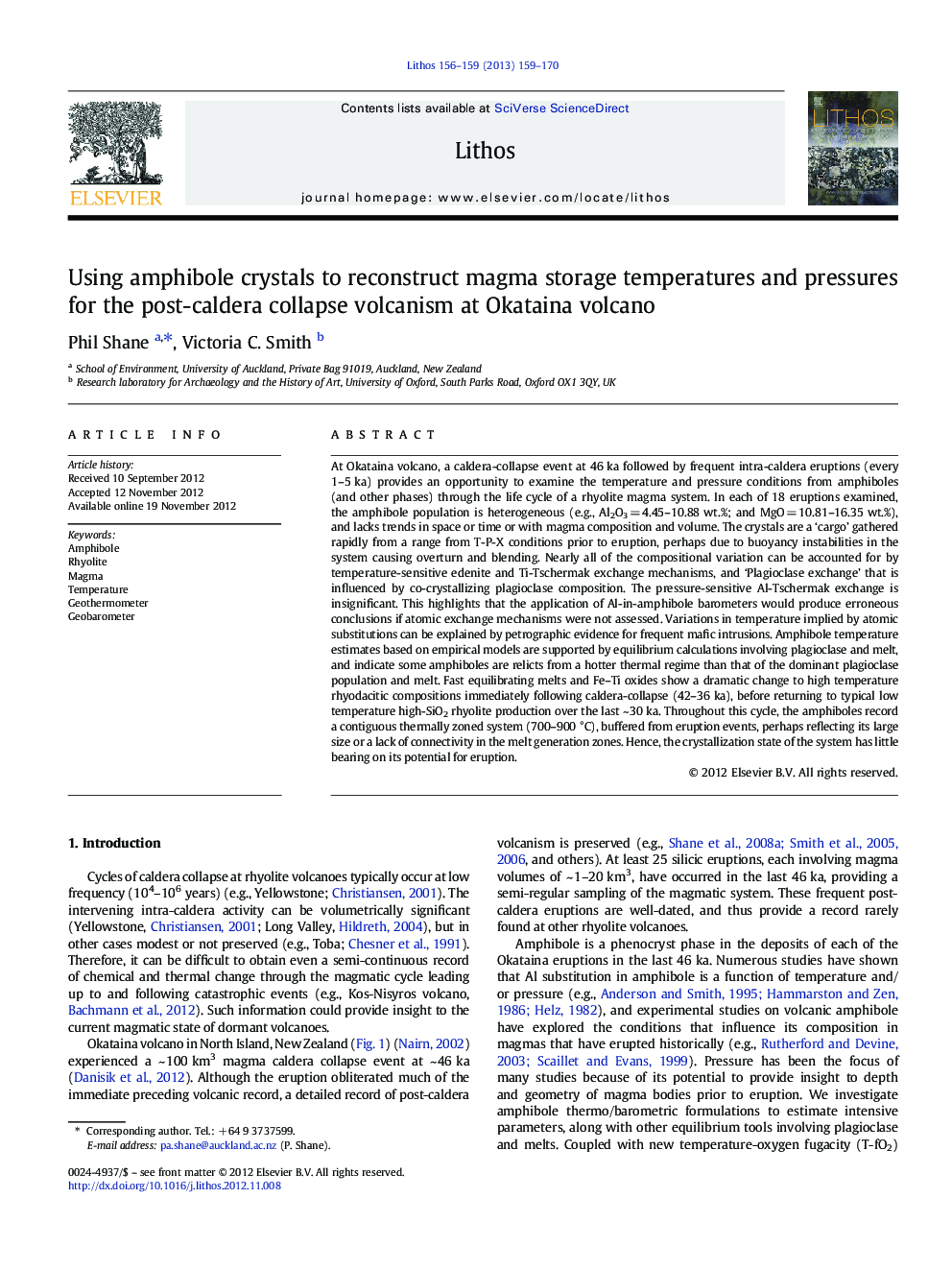| کد مقاله | کد نشریه | سال انتشار | مقاله انگلیسی | نسخه تمام متن |
|---|---|---|---|---|
| 4716384 | 1638697 | 2013 | 12 صفحه PDF | دانلود رایگان |
At Okataina volcano, a caldera-collapse event at 46 ka followed by frequent intra-caldera eruptions (every 1–5 ka) provides an opportunity to examine the temperature and pressure conditions from amphiboles (and other phases) through the life cycle of a rhyolite magma system. In each of 18 eruptions examined, the amphibole population is heterogeneous (e.g., Al2O3 = 4.45–10.88 wt.%; and MgO = 10.81–16.35 wt.%), and lacks trends in space or time or with magma composition and volume. The crystals are a ‘cargo’ gathered rapidly from a range from T-P-X conditions prior to eruption, perhaps due to buoyancy instabilities in the system causing overturn and blending. Nearly all of the compositional variation can be accounted for by temperature-sensitive edenite and Ti-Tschermak exchange mechanisms, and ‘Plagioclase exchange’ that is influenced by co-crystallizing plagioclase composition. The pressure-sensitive Al-Tschermak exchange is insignificant. This highlights that the application of Al-in-amphibole barometers would produce erroneous conclusions if atomic exchange mechanisms were not assessed. Variations in temperature implied by atomic substitutions can be explained by petrographic evidence for frequent mafic intrusions. Amphibole temperature estimates based on empirical models are supported by equilibrium calculations involving plagioclase and melt, and indicate some amphiboles are relicts from a hotter thermal regime than that of the dominant plagioclase population and melt. Fast equilibrating melts and Fe–Ti oxides show a dramatic change to high temperature rhyodacitic compositions immediately following caldera-collapse (42–36 ka), before returning to typical low temperature high-SiO2 rhyolite production over the last ~ 30 ka. Throughout this cycle, the amphiboles record a contiguous thermally zoned system (700–900 °C), buffered from eruption events, perhaps reflecting its large size or a lack of connectivity in the melt generation zones. Hence, the crystallization state of the system has little bearing on its potential for eruption.
► Amphiboles are compositionally diverse in each eruption and represent a ‘crystal cargo’.
► Temperature-controlled atomic substitutions dominant (700–900 °C).
► Geobarometers produce erroneous results in some magmatic systems.
► Crystallization state of the system has little bearing on its potential for eruption.
Journal: Lithos - Volumes 156–159, January 2013, Pages 159–170
